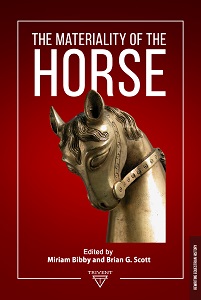The Irish “Deer” Series of Cheek-Pieces
The Irish “Deer” Series of Cheek-Pieces
Author(s): Brian G. Scott
Subject(s): History, Archaeology, Cultural history, Ancient World, Middle Ages, 6th to 12th Centuries, 13th to 14th Centuries, 15th Century
Published by: Trivent Publishing
Keywords: cheek-piece; stag; buck; red deer; fallow deer; high cross; key; zinc; brass; Bristol ceramics
Summary/Abstract: Ireland has nearly one hundred and seventy examples of cheek-pieces, two examples dating from the Later Bronze Age, the rest from c. sixth to seventeenth centuries AD, the great majority of which are of insular design and manufacture. There is a highly distinctive class that has been categorised as “horse pattern,” by far the greatest number being in the collections of the National Museum of Ireland, It is clear, however, from the basic anatomical details depicted that the animal incorporated into the design is a male deer, a red deer stag or a fallow deer buck. It is a distinct group, but one without immediate parallels, datable provenances or associations, and it is very difficult to find any convincing precursor inside or outside Ireland, or to use stylistic features to provide a reasonably close date-range. Metal analysis would tend to indicate later rather earlier mediaeval, a view that might be supported by ceramic motif parallels and, by the dating of the introduction of fallow deer to Ireland at the start of the thirteenth century AD.
Book: The Materiality of the Horse
- Page Range: 261-294
- Page Count: 34
- Publication Year: 2020
- Language: English
- Content File-PDF

